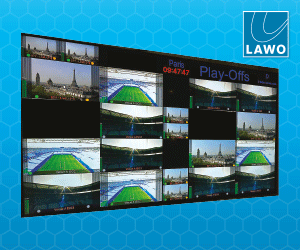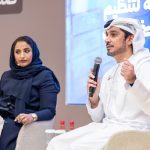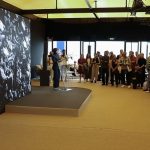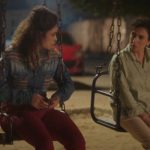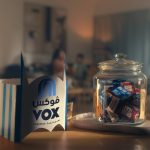For indoor locations, we wanted to shoot the day scenes separately from the night scenes. We covered the houses fully to control the light and create a fake sun effect when we needed to film day light. This idea really helped because we didnt have problems when the sun moved behind the clouds or when night fell. We shot […]

For indoor locations, we wanted to shoot the day scenes separately from the night scenes. We covered the houses fully to control the light and create a fake sun effect when we needed to film day light. This idea really helped because we didnt have problems when the sun moved behind the clouds or when night fell. We shot day scenes in the night and shot night scenes in the day many times. The director of photography Aatish Parmar was really good at creating these environments. The only problem we had with this was the heat because there were so many lights that the locations were always so hot, explains director Al Sharqy.
But lighting outside still needed to be addressed for outdoor shoots.
Lighting conditions would keep changing owing to the heavy cloud cover. There were days when it would pour for 8 to 10 hours without a break giving us little opportunity to film and, therefore, we had to cancel a few days of filming, explains Al Sharqy.
But there were times when the shoot could not be cancelled.
We had to shoot in certain areas like the souq and one day, it just wouldnt stop raining so we ended up covering the whole souq with plastic and carrying out the shoot, adds Al Sharqy. Around 300 people including the crew, actors and dancers were on set for the production.
Although the lead actors, the director and executive producer were Arab, the rest of the crew was primarily hired from India.
Perhaps one of the biggest issues, according to Abu-Homos was handling the logistics of transporting crew and equipment from one location to the next.
We shot in Mumbai, Jaipur, Jodhpur, Jaisalmer, and some days, we spent up to 12 hours travelling between locations. That meant transferring crew, equipment and so on over long distances, and that was a huge challenge. But again, we worked with people who were used to doing this so it made things a lot easier, she says.
But the challenges were not confined to the weather. Given that this comedy expects Saudi actors to dance and placed them in situations outside the norm posed huge challenges.
The whole concept of Saudi actors having to learn to dance, go on a diet, be detached from their families for a few months and travel to another country for a shoot is fairly unknown. This is also the first time they were dancing so suddenly, in the middle of the shoot, there would be a sort of panic and someone would freeze but we eventually overcame those issues. We are at the end of the season and we have seen no criticism. Our viewers associate the series with happiness and that is great, Abu-Homos claims.
The songs for all of the 40 episodes were edited in India while post production for the drama was split between Syria and Dubai.
Offline editing was completed in Syria while the online editing was done at Yara Media in Dubai. We used Final Cut Pro HD for editing the drama footage while Autodesk Smoke HD was used for the songs. We also edited the main title sequence in Dubai on Smoke and After Effects incorporating a few 3D tracking shots in it as well, Abu-Homos says.
Shooting in India was, no doubt, fun for the crew as they plan to return to the country to shoot Season 2 but with more exotic locations this time.
Working in India has been a lot of fun. The studios and crew there were a big help for us to learn how to work on big productions and handle them with ease. We shot the market scenes with 60 junior artists walking in the streets plus cars, motorcycles and kids. They were very professional. When the director said cut, everybody would return to their first position. In addition, so many props were available and helped us achieve the desired look and feel on set, adds Abu-Homos.
For season 2, OSN is now planning to move beyond Rajasthan and Mumbai to the north as well as the backwaters of Kerala. BroadcastPro was treated to a sneak preview of some of the locations that have been identified to shoot for the next series and special features includes waterfalls and houseboats.
We are going to move away from historical places to nature for the next season, confides Abu-Homos.
But having done a whole series, OSN now feels confident to tackle more subjects, introduce more characters and introduce a format that has not been attempted in the region before.
We have tackled many issues so far from the man-woman relationship; the mother-in-law and daughter-in-law issue, the generation gap and so on. But in the next season, we are looking to address issues that impact the younger generation such as dating, chatting and so on and will need younger actors so we are looking to cast new faces for this. Maybe our present actors will have children or something like that, adds Abu-Homos.
OSN is looking to do a campaign in the coming months in Riyadh and Jeddah to cast new actors and also hire other production talent such as script writers and anchors to join their team for the series.
Saudi Arabia is the most difficult market to address. Its easy to go to Lebanon or Kuwait for talent but we wanted to be as authentic as possible. We believe Saudi Arabia has a lot of talent. The technical infrastructure is not yet there but I believe there are a lot of talented young Saudis who, if given the opportunity, will excel. We will have a campaign in Riyadh and Jeddah to look for new talent, Abu-Homos adds.
Hindistani is OSNs first home production but there are many others in the pipeline as the pay TV network has already invested in 300 hours of original content. A few productions are taking place simultaneously in Damascus and Egypt as we go to press although the political turmoil in Syria has forced some productions to relocate to safer shores.

